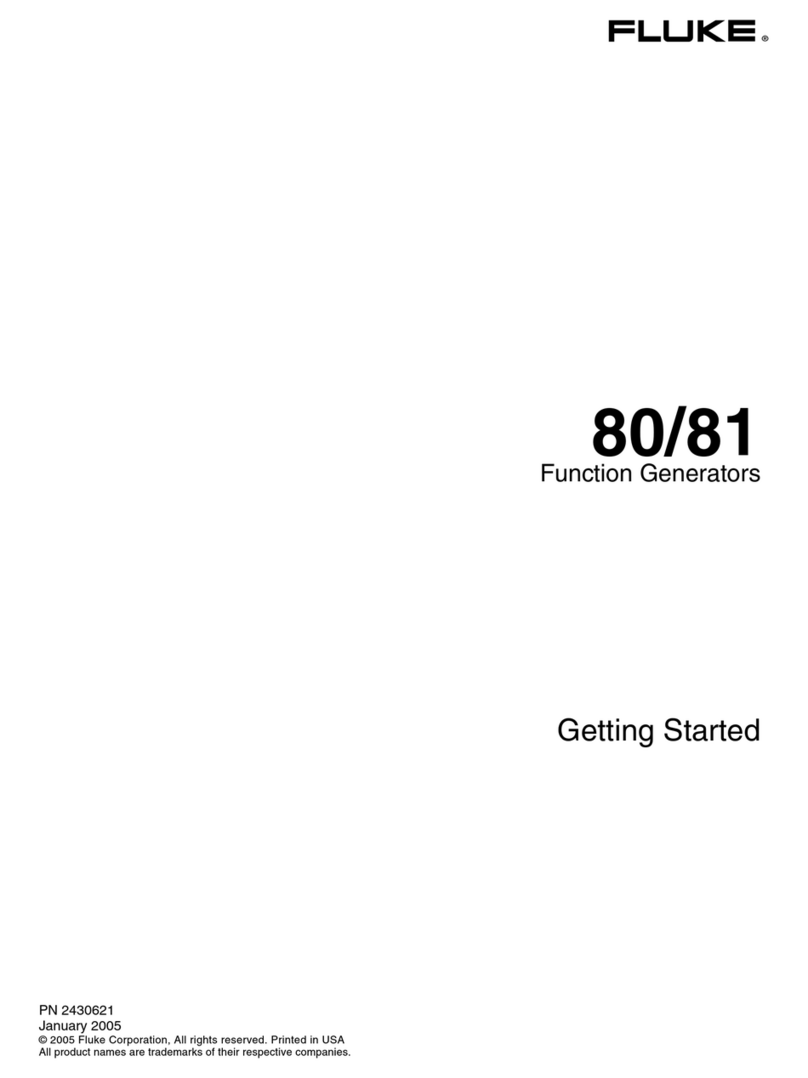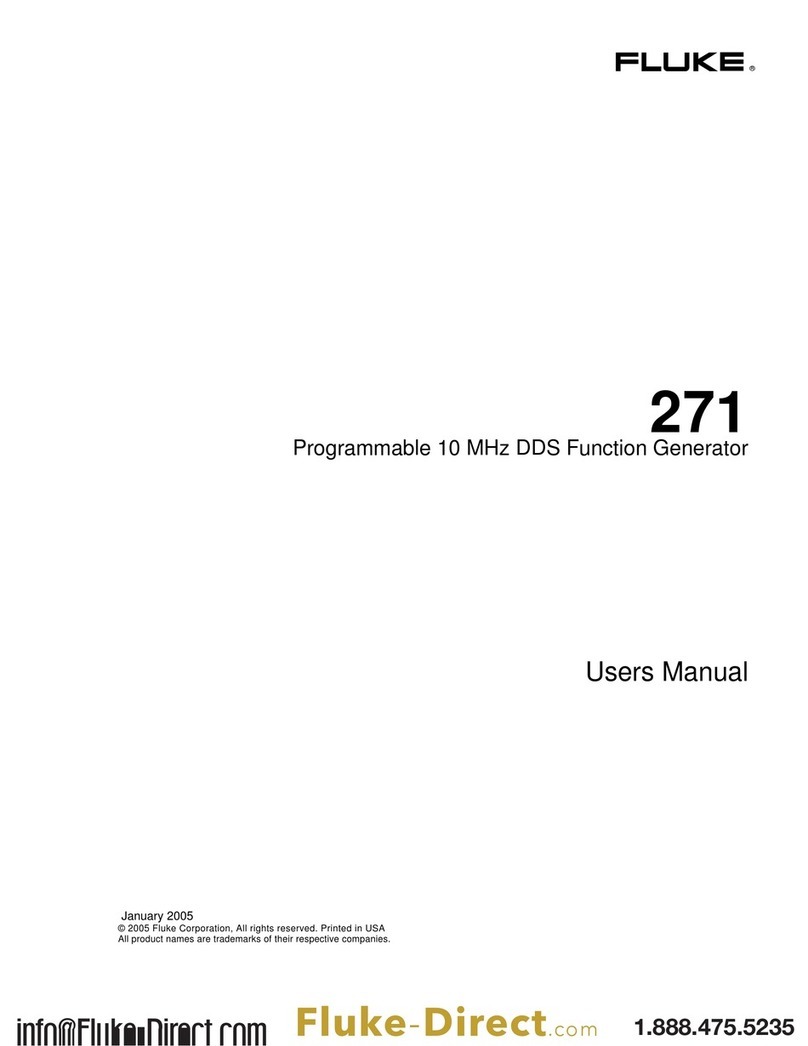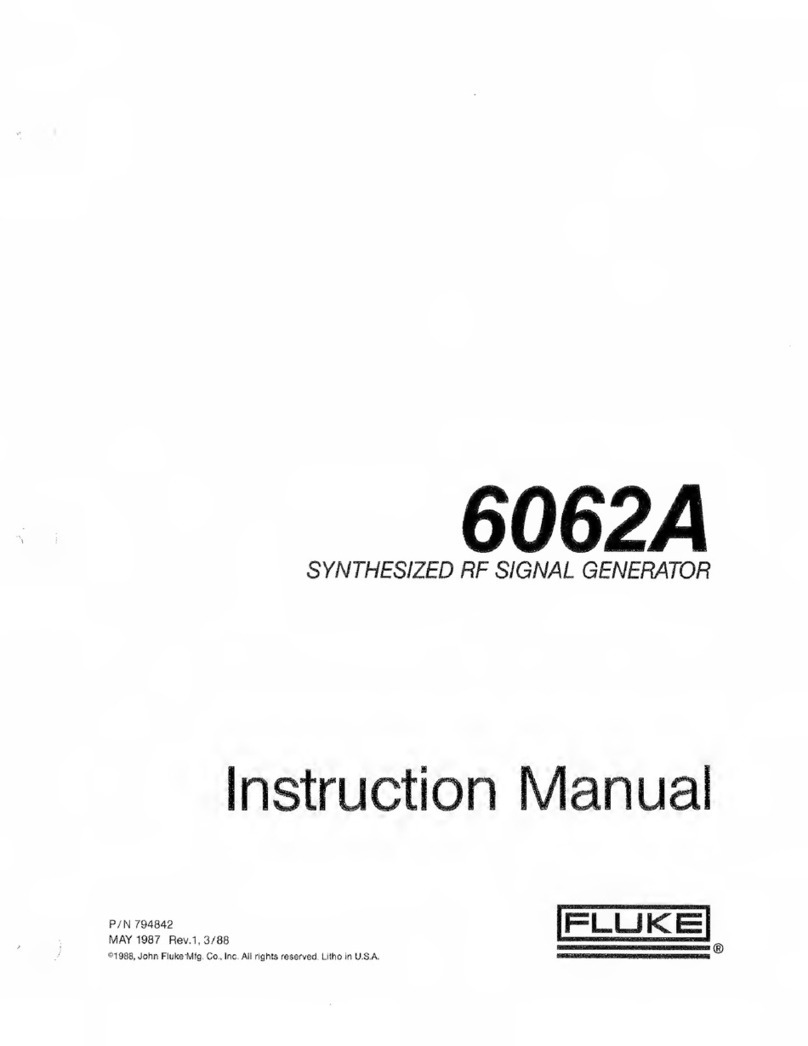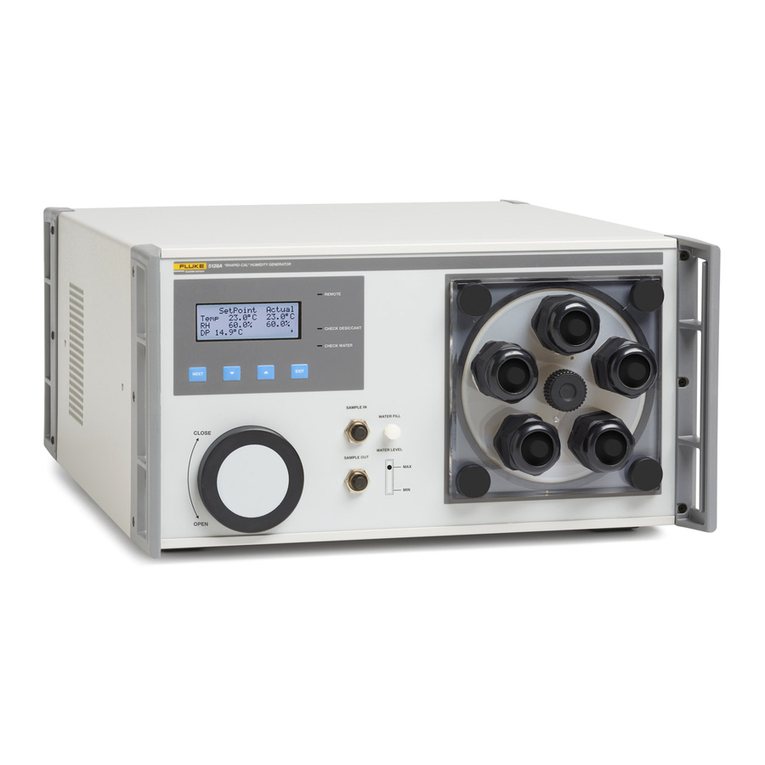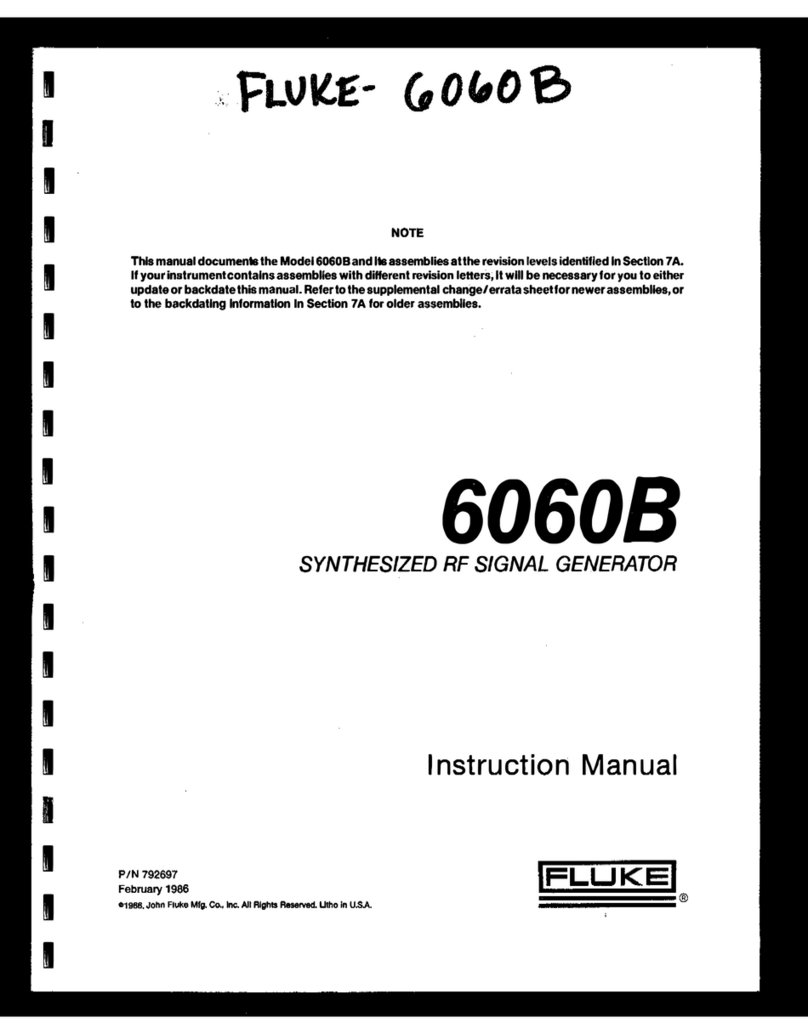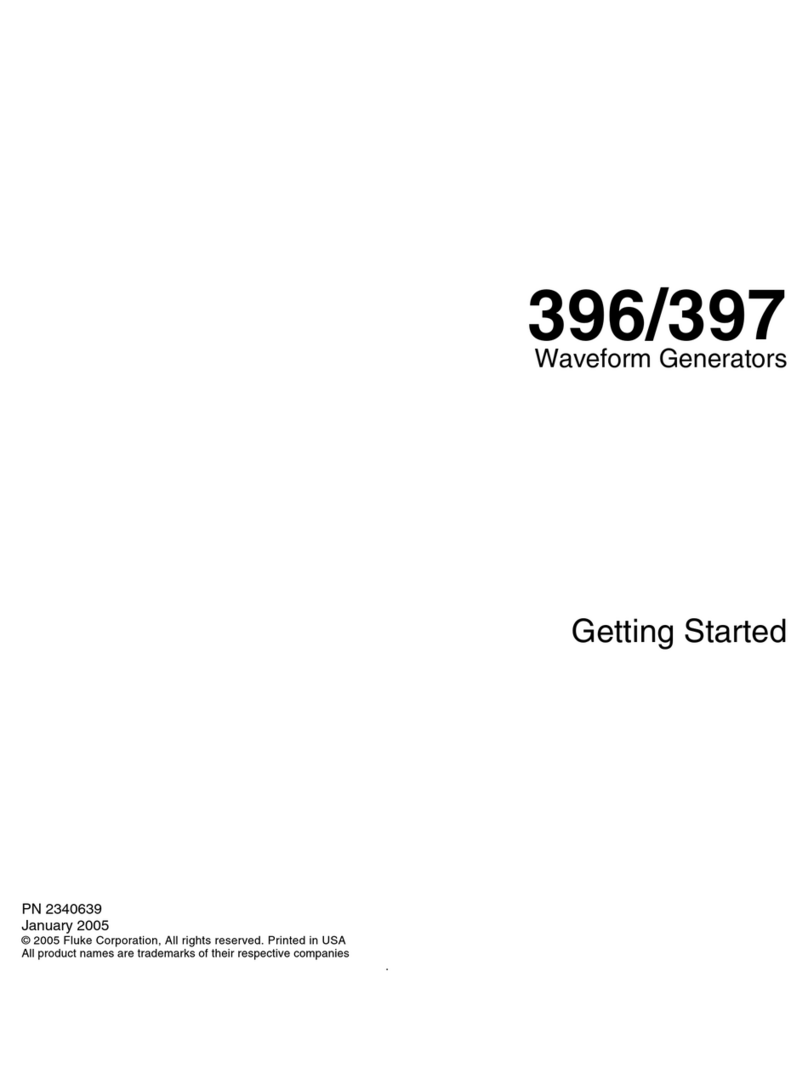TABLE OF CONTENTS, continued
SECTION TITLE PAGE
3-27. Status Signals 3-7
3-28. DETAILED CIRCUIT DESCRIPTIONS 3-8
3-29. FRONT SECTION, Al 3-8
3-30. Display PCA, AlAl 3-9
3-37. Switch PCB, A1A2 3-9
3-38. MODULE SECTION, A2 3-10
3-39. Synthesizer PCA, A2A1 3-10
3-50. VCOPCA, A2A2 3-18
3-51. Output PCA, A2A4 3-19
3-57. Attenuator PCA, A2A5 3-22
3-58. Controller PCA, A2A7 3-23
3-67. REAR SECTION, A3 3-25
3-68. Power Supply PCA, A3A1 3-25
3-69. Sub-Harmonic Reference (Part of A2AI) 3-26
3-70. NON VOLATILE MEMORY A2A8 3-26
3-71. Power Circuit 3-26
3-
72. Memory Control .-3-26
4MAINTENANCE 4-1
4-
1. INTRODUCTION 4-1
4-2. SERVICE METHODS 4-1
4-3. Fluke Service 4-1
44. Module Replacement 4-1
4-5. Parts Replacement 4-1
4A PERFORMANCE TESTS 4A-1
4A-1. INTRODUCTION 4A-1
4A-2. TEST EQUIPMENT 4A-1
4A-3. POWER-ON TEST 4A-3
4A4. SYNTHESIS TEST 4A-3
4A-5. HIGH-LEVEL ACCURACY TEST 4A4
4A-6. MID-LEVEL ACCURACY TEST 4A-6
4A-7. LOW-LEVEL ACCURACY TEST 4A-7
4A-8. ALTERNATE-LEVEL ACCURACY TEST 4A-8
4A-9. OUTPUT LEAKAGE TEST 4A-9
4A-10. ALTERNATE OUTPUT LEAKAGE TEST 4A-10
4A-I1. HARMONIC AND SPURIOUS TEST 4A-11
4A-12. MODULATION TESTS 4A-12
4A-I3. SWR TESTS 4A-17
4B ACCESS PROCEDURES 4B-1
4B-L INTRODUCTION 4B-1
4B-2. LOCATION OF MAJOR ASSEMBLIES 4B-1
4B-3. ACCESS INSTRUCTIONS 4B-I
4B4. Removing the Front Section Assembly, A14B-1
4B-5. Removing the Rear Section Assembly, A3 4B-2
4B-6. Removing the Synthesizer Board, A2A1 4B-2
4B-7. Removing the Output Board, A2A4 4B-2
4B-8. Removing the Attenuator/ RPF A2A5 Assembly 4B-2
4B-9. Removing the VCO Board, A2A1 4B-2
(Continued on page iv)






